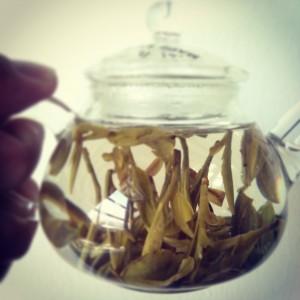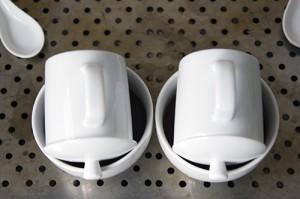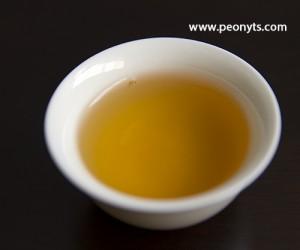As you probably know by now, our mantra is “Bringing tea closer to you”.
Besides the physical factor- i.e. we deliver the the finest tea online to your doorstep- we strive to eliminate the intimidation and mystique of tea.
One problem a lot of people face regarding tea is how to taste it.
I don’t mean there is any other way- nasal injection or direct into the bloodstream- but the world seems to be divided into those who taste the multi-layered spectrum of flavors in tea and those to whom “it tastes like tea”.
A “Sophisticated Palate”
As I wrote about earlier, often people approach tea like it is wine. Which is not wrong, after all in the English speaking world fine tea has a shorter history as compared to wine.
Not to mention the fact that there are many overlaps in the tea and wine world- the impact of area of cultivation (terroir if you like) on taste profiles, how each year’s harvest differs from each other, the aging potential (at least of certain teas) and so forth.
In fact in wine and tea appreciation there are many similarities. Not being a wine expert by any stretch of the imagination, I did what most amateurs do- visit about.com.

i) Look- color and clarity of liquor
ii) Smell
iii) Taste which consist of these stages
- Attack- initial stage
- Mid-Palate
- Finish
When you look at it, it is not altogether dissimilar to tea appreciation as I wrote about here.
Where the paths deviate is in the details.
The article suggests this:
“The Evolution Phase is next, also called the mid-palate or middle range phase, this is the wine’s actual taste on the palate. In this phase you are looking to discern the flavor profile of the wine. If it’s a red wine you may start noting fruit – berry, plum, prune or fig; perhaps some spice – pepper, clove, cinnamon, or maybe a woody flavor like oak, cedar, or a detectable smokiness. If you are in the Evolution Phase of a white wine you may taste apple, pear, tropical or citrus fruits, or the taste may be more floral in nature or consist of honey, butter, herbs or a bit of earthiness.”
Many tea review notes import the same methodology and descriptors. In fact some even go as far as to come up a flavor wheel.
This is my opinion doesn’t add to the tea drinker’s journey, in fact detracts from it.
Let me explain why.
It is dependent on different skillsets
Description is very much dependent on linguistic skills.
For example, I may see the same scene as a friend and while I describe it as “it was a windy day” another person might say “the gushing gale caressed the branches across the road with a gentle whisper that soon crescendo into an orgasmic climax”.
Tasting is also dependent on experience and memory. Different cultures use different herbs and spices. Molasses, anise and eucalyptus mean nothing to people who have not experienced it before.
Some people just aren’t good at descriptions and this may lead them to think they have “unsophisticated palates” that aren’t able to experience the same spectrum that their more descriptive counterparts can.
It Leads People away from Quality
It becomes a distraction actually, searching for obscure flavor notes. With all those notes hunting, I wonder if the drinker has the focus to discern the mouth feel, body, texture, aftertaste, intensity, huigan, chaqi, purity and briskness of the tea.
While there are cases when these notes do tell a story- such as sourness in Tieguanyin’s aftertaste- most of the time it says nothing of the quality of tea.

Is it a well-made tea that you would tell someone is worthy of the price? You wouldn’t know from the description.
A thick, broth-y mouth feel does tell something about the quality versus a thin one.
As does the intensity and how long the aftertaste lingers. The most important thing in tasting tea is not merely flavors.
Searching for these flavor notes becomes a distraction.
Not to mention the fact that how tea tastes is also a result of brewing methods. If you focus on flavors alone, you might miss the fact that it was not brewed ‘correctly’.
If a tea has the body but is too bitter for example, you might be able to adjust the brewing methods instead of dismissing it.
It discourages people from re-visiting the same tea
As I have written before, you can learn more buy drinking a few teas often than a lot of teas once. I have often wondered why lifelong tea drinkers I know usually drink a handful of teas while new-ish drinkers are hell-bent on drinking all the new teas in the world.
One reason could be this- once you have explored all the flavor notes in the tea, what incentive is there for you to return to the tea?
On the other hand, as I wrote here, good tea is moving.

The thick fruity (who cares what fruit) mouth feel of a Dancong is satisfying, perfect for a depressive rainy day.
And so forth.
I recall the emotions that each tea evoke and that’s why I keep returning to them, in doing so discover new things I might not have done previously. Coupled with information that I may have read or been told, I develop a deeper understanding of that tea, how it relates to the terrain of Anxi, the ‘zuo qing’ and so forth.
Things I might never know had I a touch-and-go relationship with tea.
It is not helpful
What purpose are you hoping to achieve with the flavor notes?
If it is for personal journals, mentioned above, why would you want to drink the tea once you have discovered all the flavor notes?
If it is to help someone with a purchase, it doesn’t correlate with quality as I wrote about earlier.
So what purpose does it serve, besides impressing the plebeians with your “superior palate”?
In fact, as mentioned in the first part, it is intimidating and often leads people away from tea.
Now what good would that be to you?
See more articles on Tea Appreciation here
